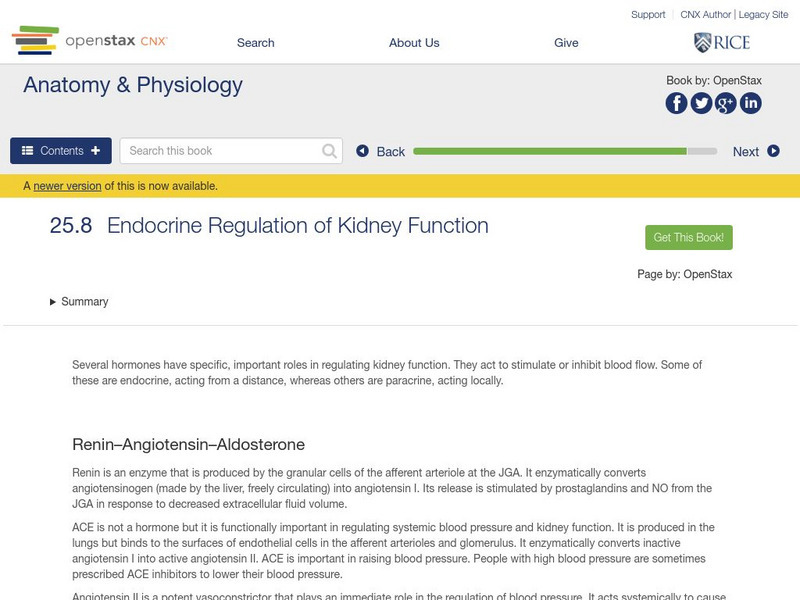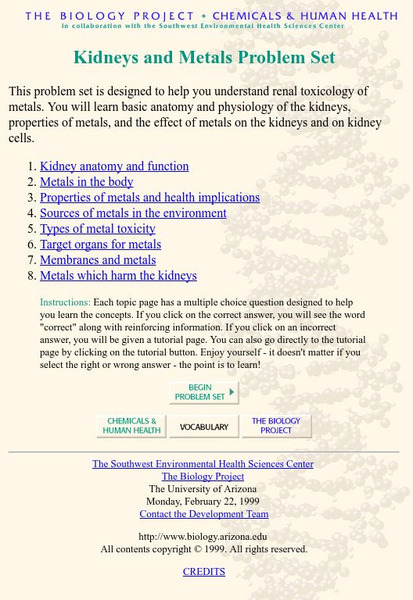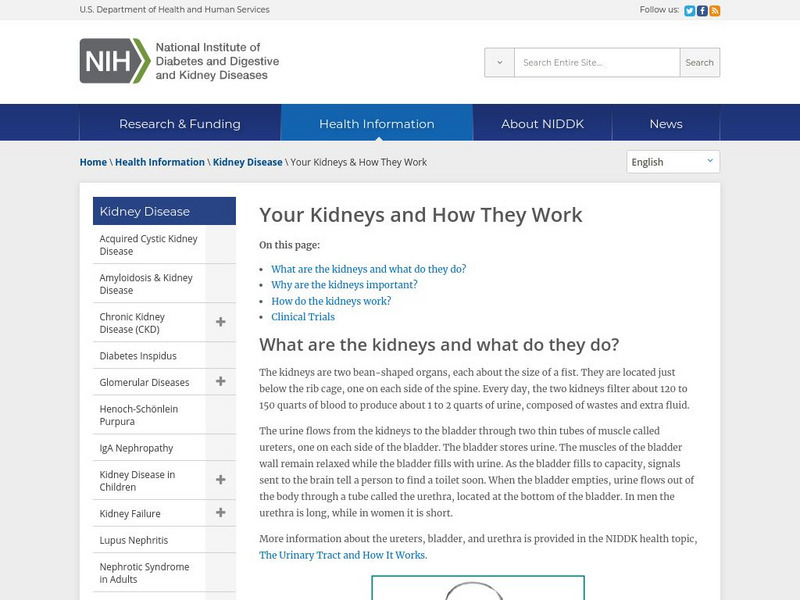Curated OER
It May Be Yucky, But Someone Has To Teach It. . .
Fourth graders study the names and parts of the excretory system in this hands-on activity. They use common items to make a model of the system.
Curated OER
Tissues
In this tissue learning exercise, students are given notes on 6 types of epithelial tissues, 10 examples of connective tissue, three types of muscular tissue and the components of nerve tissue.
Curated OER
Properties of Matter (Biomaterial Through Nanotechnology)
Students investigate friction between different surfaces. In this physics lesson, students research biomaterials that can reduce friction. They calculate efficiency using a mathematical formula.
Curated OER
Cells All Around
Students measure the size of an epithelial cell and to estimate the number of epithelial cells in a given area of the body. After watching a video on cells, student groups perform an experiment using a microscope to view some of their...
Curated OER
Red Gold-The Epic Story of Blood
In this blood worksheet, learners watch a video called "The Epic Story of Blood" and answer 24 questions about the creation of blood, how it is produced, blood donation, blood banks and transfusions. Students take an short quiz about the...
Curated OER
Sharks in Decline
Students investigate common fishing methods used to capture sharks. They decide why these methods and the shark's reproductive biology are contributing to the quick reduction in the shark population.
Biology Junction
Flatworms
In this flatworms instructional activity, learners identify and color the different parts of a flatworm. They complete 14 short answer questions related to the topic.
Curated OER
Are You Being Poisoned by Your Dishes?
Students explore lead poisoning and how it relates to ceramic dishes. They perform an experiment to discover if any of your ceramic ware is leaching lead which might cause lead poisoning.
Curated OER
Lead Poisoning and Ceramic Dishes
Students explore the amount of lead in ceramic plates through an experiment. Students determine if everyday dishware is leaching lead into food. They chart their results and discuss how much lead in ceramic dishware may cause lead...
Curated OER
Do You Have the Guts?
Seventh graders Name and locate the major internal organs of the human body and the frog. Students virtually dissect a frog and compare organs to the human organs. Students draw illustrations of their learnings.
Curated OER
Tissue Types
In this human tissue worksheet, students read about the 4 different tissue types in the body. Students read 4 pages about the types.
Curated OER
Bean There, Done Plant
Students explain that events in nature follow an orderly progression when they plant seeds and observe the development of the seeds. They count seeds and find the likenesses and the differences of many seeds.
Curated OER
Fluids, Electrolytes, and Acid-Base Balance Study Questions
In this fluids, electrolytes, and acid-bas balance system study questions, young scholars define 12 words associated with this system. They answer 12 short answer questions about the components of the acid-balance system.
Curated OER
Advanced Matching-medical Fields Part 2
For this medical careers worksheet, students study the different fields of medicine. Students match 11 terms to the correct definition that is provided.
Curated OER
Laparoscopy Tissue Biopsy
Young scholars describe the anatomy and physiology of a selected organ. They identify the major artery and vein that delivers blood to and from the selected organ and construct an accurate scaled 3D model of a selected organ.
OpenStax
Open Stax: Anatomy & Physiology: Endocrine Regulation of Kidney Function
Learn how several hormones have specific, important roles in regulating kidney function. Find out how they act to stimulate or inhibit blood flow.
Khan Academy
Khan Academy: Measuring Kidney Function
The glomerular filtration rate (GFR) is used to determine how well the kidneys are functioning. The glomerulus in the kidney is a high-pressure system that is optimal for fluid filtration. Read the information about measuring kidney...
University of Arizona
Kidneys and Metals Problem Set
Great learning exercises to check your understanding of the kidneys. Complete this problem set and if you miss an answer you are taken to a tutorial that is very useful. This is a good site to use for research as well as checking for...
Other
Kidney Function and Care
The author of this article, Ron Kennedy, M.D., describes the kidney and its functions in an easy to understand way.
The Association of the British Pharmaceutical Industry
Abpi: Homeostasis: Kidneys and Water Balance
A complete, self-paced lesson on homeostasis in the human body, focusing on kidney function. Students work their way through illustrated and animated tutorials, and answer review questions along the way. There is a self-checking quiz at...
National Institutes of Health
Niddk: Your Kidneys and How They Work
This resource provides a detailed description of both structure and function of the kidneys, the role they play in the urinary system, as well as provides information about kidney disease.
Sumanas
Sumanas Inc: Life: The Science of Biology: The Mammalian Kidney
Use this tutorial to help supplement your learning about how the kidneys work.
Khan Academy
Khan Academy: Measuring Glomerular Filtration Rate of the Kidneys With Insulin
Read this passage and study the graphics; then take the five-question quiz over measuring glomerular filtration rate of the kidneys with insulin.
TED Talks
Ted: Ted Ed: How Do Your Kidneys Work?
After drinking a few glasses of water on a hot day, you might be struck with a sudden urge. Behind that feeling are two bean-shaped organs that work as fine-tuned internal sensors. This video describes how the incredible kidneys balance...























